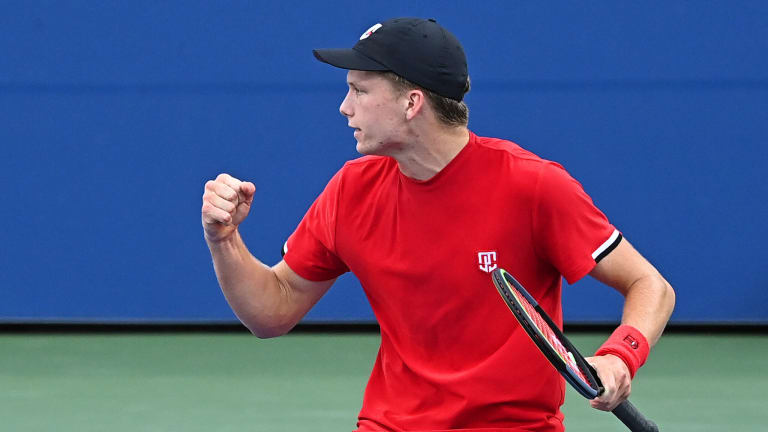US Open
Jenson Brooksby tops Taylor Fritz in four-hour war of blazing winners, crazy tiebreakers—and one around-the-netpost miracle
By Sep 03, 2021US Open
US Open revamps mixed doubles format, adds $1 million prize to incentivize "biggest names in the sport"
By Feb 11, 2025US Open
US Open adds a 15th day, moves to Sunday start in 2025
By Jan 29, 2025US Open
Post-2024 US Open WTA storylines: The Age of Aryna; what's next for Swiatek and Gauff?
By Sep 09, 2024US Open
Post-2024 US Open ATP storylines: The race between Alcaraz and Sinner for No. 1 ... and more
By Sep 09, 2024US Open
Jannik Sinner’s US Open title run won’t clear the air around him entirely
By Sep 09, 2024US Open
Taylor Fritz fails in US Open final, but hope springs for American men's tennis
By Sep 09, 2024US Open
Jannik Sinner storms to second major title, defeats Swift, Kelce-backed Taylor Fritz at US Open
By Sep 08, 2024US Open
Jessica Pegula's willingness to take chances paid off at the US Open
By Sep 08, 2024US Open
Aryna Sabalenka won her first US Open by learning from her past heartbreaks in New York
By Sep 08, 2024Jenson Brooksby tops Taylor Fritz in four-hour war of blazing winners, crazy tiebreakers—and one around-the-netpost miracle
You'll need to see it to believe it.
Published Sep 03, 2021
Advertising
Advertising

Brooksby can play with physicality, he can hit blazing winners and use his opponent’s pace, but he also has a knack for anticipating his opponent’s shots, and hitting his own where the other guy isn’t.
© 2021 United States Tennis Association